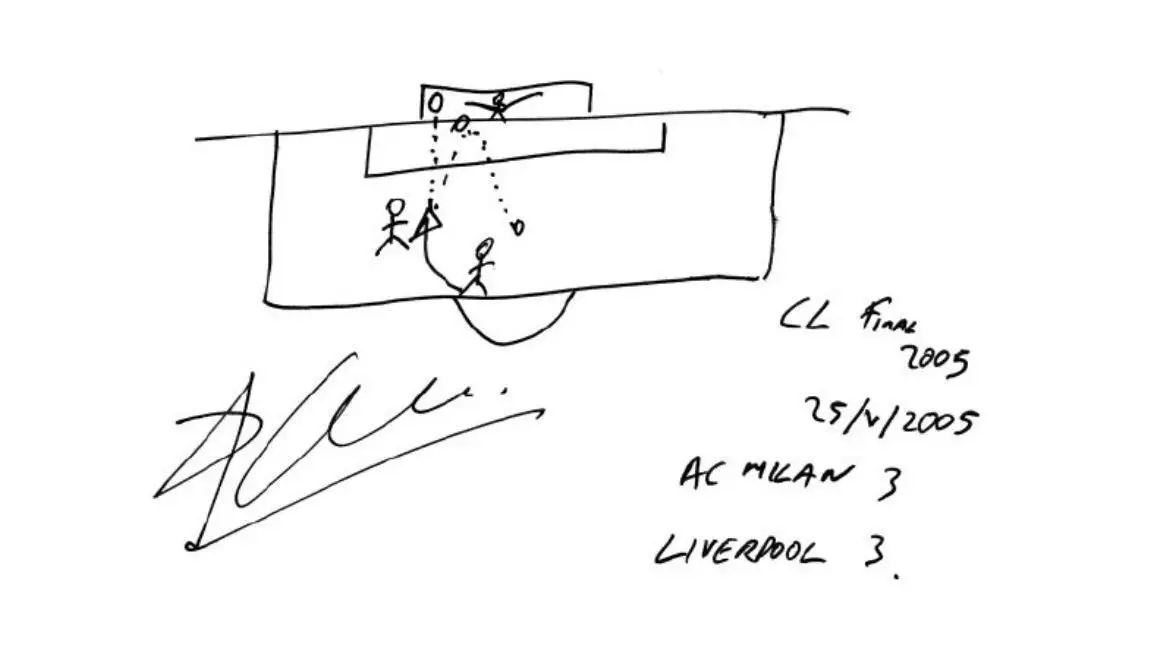In the world of football, while the fluidity of a passing move or the precision of a tackle captivates fans, it is the act of scoring goals that embodies the essence of the game. Goals, far more than mere statistics, hold stories, emotions, and artistic expressions that resonate with players and fans alike. This article delves into an innovative project initiated by German football journalist Javier Cáceres, who, for over two decades, has gathered unique artistic interpretations of goals from some of the sport’s most celebrated players.
Cáceres’ project began unexpectedly in 2005 during an interview with Chilean international Leonel Sánchez, who, instead of simply narrating his famous 1962 World Cup goal against the Soviet Union, opted to illustrate it on paper. This spontaneous act unearthed a fascinating dimension of storytelling in football, where players are able to recount their experiences through drawings. The sketches serve as a visual representation of a moment that defines not only the player’s career but also a unique part of football history. What began as a simple request transformed into a profound exploration of players’ relationships with their most iconic moments.
Cáceres has meticulously compiled these hand-drawn representations in a book titled “Tore Wie Gemalt” (“Goals as Portraits”). His portfolio features contributions from some of the greatest names in football, including legends like Pelé, Bobby Charlton, and Franz Beckenbauer, as well as contemporary stars like Kai Havertz. The sketches vary in style, reflecting the diverse personalities and artistic inclinations of the players, revealing a more intimate side to their celebrated careers.
The significance of these illustrations is further emphasized by Cáceres’ belief that each goal has a backstory that may not be commonly known. His interactions with players go beyond traditional interviews; they evoke nostalgia and a personal connection, offering insights into moments of brilliance that shaped the players’ legacies.
Illuminating Iconic Goals
Among the distinguished contributions to Cáceres’ compilation are notable goals from significant matches. For instance, Argentine forward Jorge Valdano’s sketch of his famous goal in the 1986 World Cup final captures not just the technical execution of the goal but also the emotions tied to that monumental moment in sports history. Valdano’s description while sketching articulates the gravity of scoring on such a grand stage.
Equally captivating is Pep Guardiola’s participation, who, despite not being primarily known for his goal-scoring, meticulously illustrates his first goal for Barcelona against Atlético Madrid. The precision in Guardiola’s drawing underscores the meticulous nature that has characterized his managerial career. The divergence in styles—Guardiola’s technical precision compared to Xavi Hernández’s abstract representation—further illustrates how different players interpret their moments of glory.
The collection doesn’t shy away from contemporary figures either. Xabi Alonso recalls his emotional penalty goal during the iconic 2005 Champions League final, a defining moment highlighted by its high stakes and dramatic narrative. Young players like Kai Havertz share their aspirations and the significance of their achievements, offering a glimpse into the present landscape of football while crucially contributing to its historical tapestry.
Havertz’s detailed sketch of his Champions League-winning goal for Chelsea exemplifies the blending of personal achievement with team legacy, emphasizing how today’s players still embed their narratives within the framework of football’s enduring legacy.
However, not all aspirations come to fruition. Cáceres shares his profound disappointment at missing opportunities to meet and gather contributions from football legends like Diego Maradona and Johan Cruyff. His near encounter with Maradona serves as a poignant reminder of the fleeting nature of time and the impermanence of life—elements that resonate with the stories behind the goals encapsulated in “Tore Wie Gemalt.”
Ultimately, Cáceres’ work transcends the realm of sports journalism. It stretches into art, philosophy, and the very heart of human experience, encapsulating the way goals serve as powerful expressions of identity, legacy, and the intricate narratives woven into the sport that fans adore. This unique collection stands not just as a celebration of football but as a testament to the stories that shape our understanding of it.

